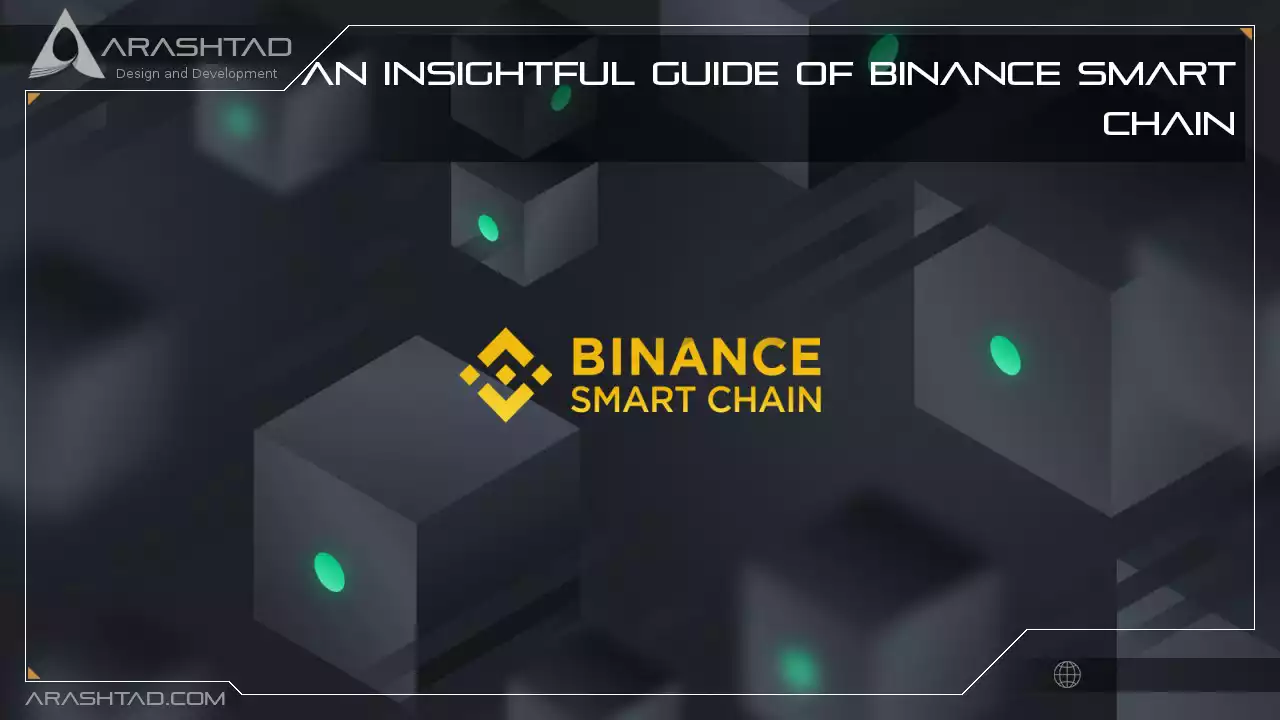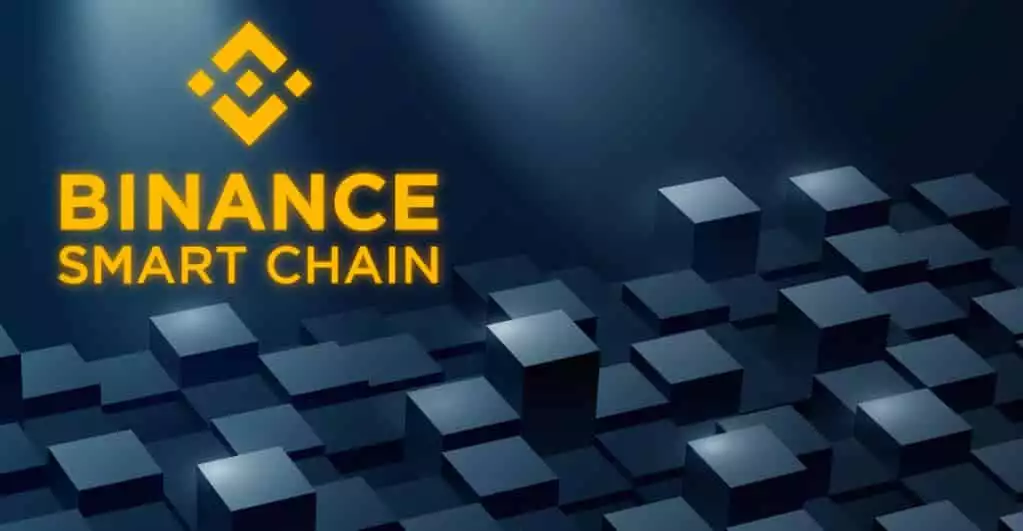An Insightful Guide to Binance Smart Chain
As of 2021, Binance has become one of the most recognized brands in crypto. Binance operates its own blockchains. One is called Binance Smart Chain (BSC) – a blockchain that uses Ethereum as a platform. The new Blockchain, BNB Chain, which provides a complete ecosystem for building high-performance decentralized apps, is coming to change this. This article will give you an overview of Binance Smart Chain, which was developed to be cross-chain compatible with Binance Chain. It is designed to offer consumers the best of both worlds and Detailed information about Binance Chain and BSC.
Definition of the Binance Smart Chain
The Binance Smart Chain (BSC), now renamed BNB Chain, runs alongside the Binance Chain. In contrast to Binance Chain, BSC supports smart contracts and the Ethereum Virtual Machine (EVM). The goal was to keep Binance Chain’s high throughput while adding smart contracts. There are similarities between both blockchains. However, Binance Chain is not a layer two nor an off-chain scaling solution; it’s a standalone blockchain that can run even if Binance Chain fails. Both chains, however, have similar design characteristics.Due to its EVM compatibility, BSC supports all Ethereum tools and DApps. Developers can theoretically migrate their applications from Ethereum easily. Users can connect BSC with MetaMask simply by changing a few parameters. The main advantage of Binance Smart Chain is that it combines the best of both technologies. With BSC, new users can convert assets quickly and with minimal transaction costs due to its fast block generation time and low transaction costs. Binance Smart Chain supports EVM-compatible programming and cross-chain connectivity, making it easier for programmers to work.
Ideas for Binance Smart Chain Configuration
To ensure user safety, BSC focuses on the following elements:Using BSC’s self-contained Blockchain, users and developers can access security and safety.
Due to BSC’s EVM compatibility, all Ethereum tools will be supported with faster transaction times and lower costs.
The Binance Chain allows cross-chain communication and scalability for high-yield Dapps that want to be quicker and smoother to run.
Smart Chain’s on-chain governance is based on a PoS consensus method and 21 transaction validators, which boosts community decision-making power. Other users are permitted to join the community.
Feature of Binance Smart Chain
1- An independent blockchain
BSC doesn’t have anything to do with Binance Innovative Chain, even though it’s a sibling blockchain to Binance Chain. Binance innovative Blockchain is a standalone blockchain that doesn’t connect to Binance Chain besides from the same parent Binance Exchange. Even if Binance Chain is shut down or stopped working, Binance Chain will continue to operate without interruptions or technical difficulties.2- Promotes community-based governance and stakeholder participation
Specifically, a proof-of-stake consensus model (PoSA) is used on the platform. It is also possible to stake Binance (BNB), a native token of BSC, to participate in network security and vote on community governance protocols. Furthermore, Proof-of-Stakes (PoS) can process transactions more quickly, making them more competitive, with networks still using full proof-of-work.3- Ethereum Compatibility
Because BSC’s smart contracts support and are compatible with Ethereum dApps, developers can easily create DApps, tools, and other ecosystem components on its network.4- The Native Compatibility option
Though BSC is not a layer two solution, there is no communication restriction between BC and BSC. This is because Binance smart chain is a parallel blockchain to the Binance Chain that is independent of it. As a result of this feature, users can transfer their cryptocurrencies from the Binance chain to the Binance smart chain and vice versa.5- Quorum of Validators
BSC needs a validator quorum to secure its network. The Blockchain has 21 validators in total, which the stakes of BNB will elect every 24 hours, so a new validator is elected every 24 hours. There is no special qualification required for a validator. A validator can be anyone, but a restriction will restrict the number of validators to those in the top 21. this cycle will repeat every 24 hours. It takes approximately 20 minutes for platform validators to update the BSC network during the “epoch” period, which consists of 240 blocks. BSC also implemented slashing to disincentivize malicious actors from approving or double-signing inaccurate transactions. Attackers utilizing slashing attacks expose themselves and make their attempts extremely costly.Binance Smart Chain (BNB Chain) overview
The Binance Smart Chain is a cutting-edge technology that allows Binance Chain to be programmable and interoperable. Binance Smart Chain utilizes 21 validators with Proof of Staked Authority consensus, allowing shorter block times and lower fees. Staking’s most bonded validator candidates will become validators and create blocks. Double-sign detection and other cutting logic will guarantee security, stability, and chain finality.Binance Chain overview
Regarding programmability, Binance Chain was the first Blockchain created by Binance. However, it had several limitations. Therefore, BSC was created as a solution. Due to the use of BSC, platform users will be able to run Ethereum-based smart contracts and apps.Is it better to use Binance Chain or Binance Smart Chain?
The purpose of this section is to describe what you can do with Binance Chain and Binance Smart Chain, as well as to show a comparison of them. The Binance Chain and Binance Smart Chain operate in tandem. Together, they provide decentralized exchanges, smart contracts, decentralized applications, and lower transaction costs. Thus, it’s up to you whether you use Binance Chain or Binance Smart Chain.Binance Smart Chain allows You:
1-BNB and BEP2 tokens can be sent and received on the Blockchain.2-Use BSCscan, API, and node RPC interfaces to examine the transaction history and blocks on the chain.
3-You can win some block prizes by staking your BNB.
Binance Smart Chain allows You as a Developers:
1-Digitalize assets and create new tokens.2-Existing DApps can be migrated.
3-Maintain a complete node that monitors and transmits live transactions, blocks, and consensus updates.
4-You can become a BSC validator.
5-Provide tools and wallets to assist Dapp users.
Binance Chain allows you to :
1-The BNB has been sent and received.2-Digitalizing assets, creating new tokens, and utilizing Binance Chain as an underlying exchange/transfer network.
3-It is possible to send, receive, burn/minted, and freeze/unfreeze tokens.
4-Prepare a proposal for Binance Smart Chain on-chain governance.
Binance Chain allows you to as a trader:
1-The creation of trading pairs between two distinct tokens is proposed.2-With the SDK, you can send orders to buy or sell assets on the chain.
3-Verify certain assets’ pricing and market activity by monitoring the DEX market.
Binance Chain allows you to as a developer:
1-A Binance Chain Explorer, API, and node RPC interface can be used to access the transaction history.2-Maintain a complete node that monitors and broadcasts transactions, blocks, and consensus activities in real time.
3-By using complete nodes or APIs, you can extract data from other Binance Chains.
4-Help users use Binance Chain and Binance DEX by developing tools and applications.
Conclusion
Various cutting-edge protocols bridge the gap between multiple blockchains with BSC, which significantly expands the functionality of the original Binance Chain. Though the platform is still in its infancy, its promise of BNB staking, combined with EVM compatibility, makes it a perfect choice for developers seeking to build strong decentralized apps. To provide developers with new programming and interaction capabilities on the blockchain, Binance Smart Chain will combine DEX blockchain characteristics with smart contract capabilities.Download this Article in PDF format

Arashtad Custom Services
In Arashtad, we have gathered a professional team of developers who are working in fields such as 3D websites, 3D games, metaverses, and other types of WebGL and 3D applications as well as blockchain development.


